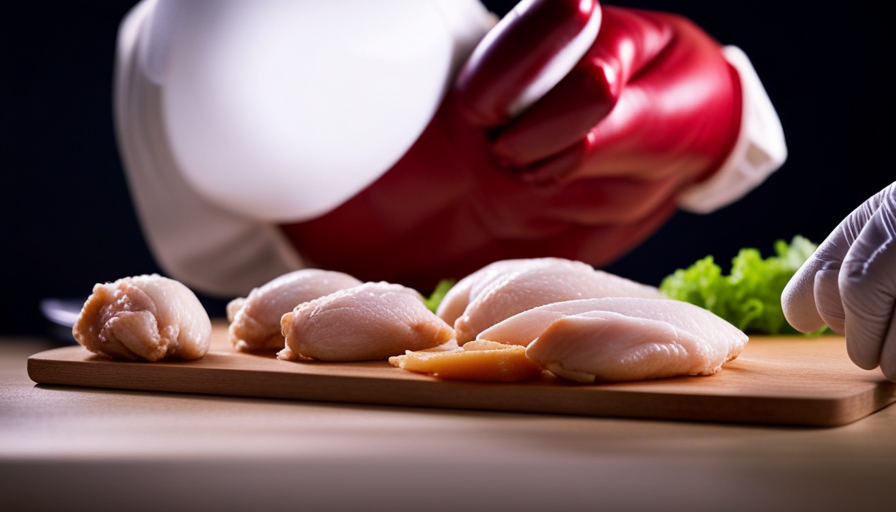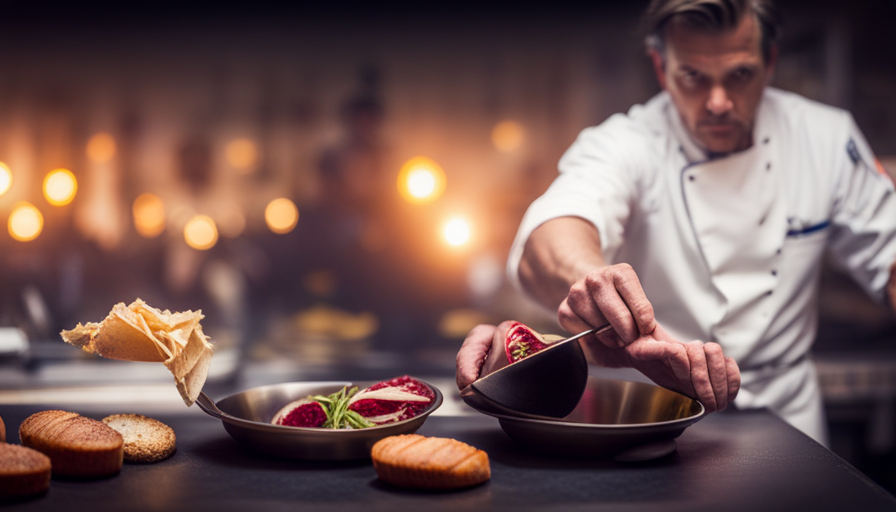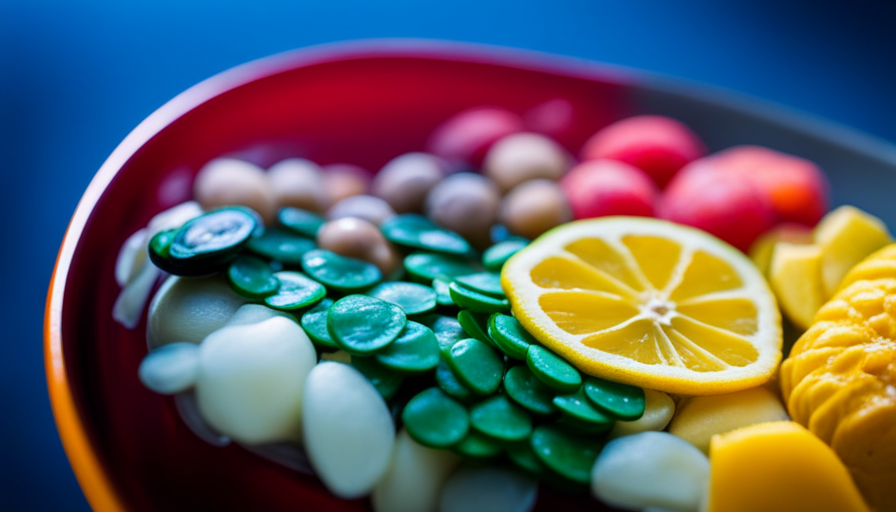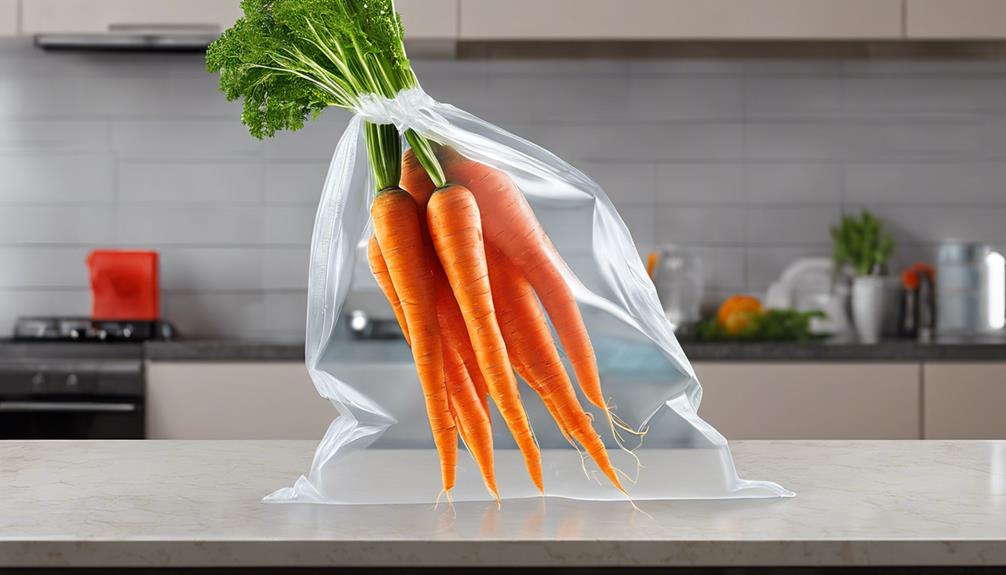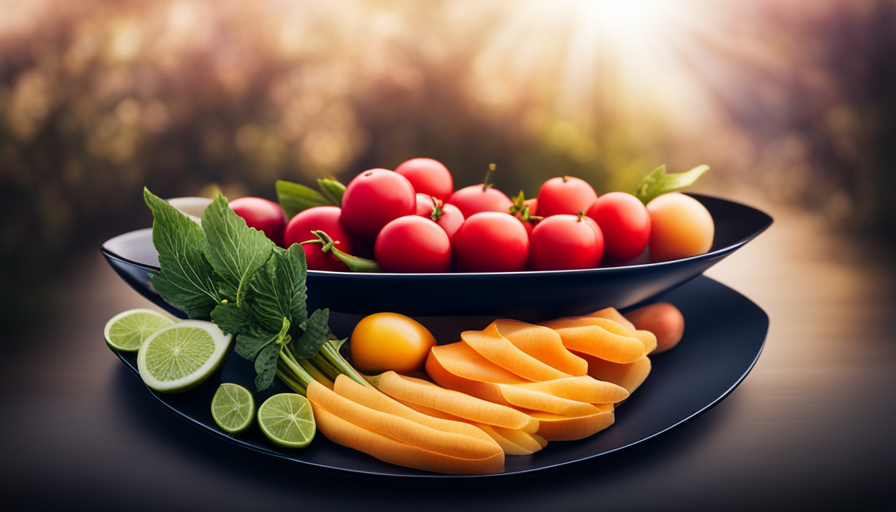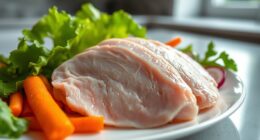Cooking chicken can be an enjoyable and flavorful experience, but it also necessitates careful adherence to food safety guidelines. To guarantee that your homemade dishes are not just delicious but also safe to consume, it is essential to follow correct handling and cooking methods.
This article will provide you with a comprehensive guide to food safety rules when cooking raw chicken.
Properly handling and storing raw chicken is the first step in preventing foodborne illnesses. Thawing chicken safely, cooking it to the correct temperature, and avoiding cross-contamination are essential practices to keep in mind.
Additionally, safe handling of leftovers and understanding foodborne illnesses are crucial for maintaining a healthy kitchen. General kitchen hygiene practices, such as regularly cleaning surfaces and utensils, are also important.
Whether you’re grilling chicken or cooking it in the oven, knowing how to handle and prepare it safely is key. By educating yourself and others on chicken safety, you can ensure that every meal you prepare is both delicious and free from any potential health hazards.
So let’s dive into the world of food safety rules when cooking raw chicken and create culinary masterpieces with confidence!
Key Takeaways
- Thawing chicken safely is essential to prevent the growth of harmful bacteria
- Using a meat thermometer to cook chicken to the correct temperature is important for food safety (165°F/74°C)
- Avoiding cross-contamination by separating raw chicken from other foods and practicing proper hygiene is crucial
- Storing and handling raw chicken properly, including refrigerating leftovers promptly, helps prevent foodborne illnesses
Properly Handling and Storing Raw Chicken
Now, let’s talk about how you should handle and store raw chicken to keep it safe and delicious.
When it comes to handling raw chicken, there are a few key rules to follow. Firstly, it’s important to thaw the chicken properly. The best way to do this is by placing it in the refrigerator overnight. This slow thawing process ensures that the chicken remains at a safe temperature and prevents the growth of harmful bacteria. If you’re in a hurry, you can also thaw it in a sealed plastic bag under cold running water. However, it’s crucial to never thaw chicken at room temperature, as this creates a breeding ground for bacteria.
Once your chicken is thawed, it’s important to store it correctly. Raw chicken should always be stored on the bottom shelf of the refrigerator to prevent any drips or cross-contamination with other foods. Keep it in a sealed container or a leak-proof plastic bag to avoid any contact with other items. It’s also important to use the chicken within a day or two of thawing to ensure its freshness and prevent any spoilage.
Now that we’ve covered the proper handling and storage of raw chicken, let’s move on to the next section about thawing chicken safely.
Thawing Chicken Safely
To ensure your chicken is thawed safely, you need to follow these guidelines. Thawing chicken properly is crucial to prevent the growth of harmful bacteria. There are two main methods for thawing chicken: quick thawing and safe thawing alternatives.
Quick thawing methods involve using the microwave or cold water. When using the microwave, make sure to remove any packaging and place the chicken on a microwave-safe plate. Use the defrost setting and rotate the chicken every few minutes to ensure even thawing. If using the cold water method, place the chicken in a leak-proof plastic bag and submerge it in cold water. Change the water every 30 minutes to maintain a safe temperature.
Safe thawing alternatives include thawing chicken in the refrigerator or using the "defrost" setting on your refrigerator. Simply place the chicken on a plate or in a container to catch any drips, and allow it to thaw slowly in the refrigerator. This method requires planning ahead, as it can take several hours or overnight.
Using these guidelines for thawing chicken safely is essential for preventing foodborne illnesses. Once your chicken is fully thawed, it’s important to cook it to the correct temperature to ensure it’s safe to eat.
Cooking Chicken to the Correct Temperature
Make sure your chicken is a perfect symphony of tenderness and juiciness by ensuring it reaches the right temperature throughout. Cooking chicken evenly is crucial to avoid any risk of foodborne illnesses.
One of the best ways to achieve this is by using a meat thermometer. This handy tool allows you to monitor the internal temperature of the chicken, ensuring it reaches the safe minimum temperature of 165°F (74°C) to kill any harmful bacteria.
To cook chicken to the correct temperature, insert the meat thermometer into the thickest part of the chicken, avoiding any bones or fat. Make sure the thermometer doesn’t touch the pan or the bone, as this can give you an inaccurate reading. As the chicken cooks, keep checking the temperature until it reaches 165°F (74°C) in multiple spots. This ensures that the chicken is fully cooked and safe to eat.
By cooking chicken to the correct temperature, you can guarantee that it’s not only delicious but also safe to consume.
Now that you know how to cook your chicken evenly using a meat thermometer, let’s move on to the next important step: avoiding cross-contamination.
Avoiding Cross-Contamination
Ensure the health and well-being of yourself and your loved ones by practicing proper hygiene and preventing the spread of harmful bacteria when handling poultry. When it comes to cooking raw chicken, avoiding cross-contamination is crucial in preventing salmonella contamination. Here are three important steps to follow:
-
Separate: Keep raw chicken separate from other foods, especially those that won’t be cooked, such as salads or fruits. Use separate cutting boards, utensils, and plates for raw chicken to avoid cross contact.
-
Clean: Wash your hands thoroughly with soap and warm water before and after handling raw chicken. Additionally, clean all surfaces, utensils, and dishes that come into contact with raw chicken. Use hot, soapy water to ensure proper sanitation.
-
Store: Store raw chicken in a leak-proof container or plastic bag to prevent juices from contaminating other foods in the refrigerator. Place it on the bottom shelf to avoid any potential drips onto other foods.
By following these steps, you can significantly reduce the risk of foodborne illnesses caused by cross-contamination.
Now, let’s move on to the next section about safe leftovers handling.
Safe Leftovers Handling
Leftovers can be a delicious treat, but handling them safely is essential for protecting your loved ones from harmful bacteria. When it comes to leftover chicken, there are a few important steps you should take to ensure its safety.
First and foremost, always refrigerate leftover chicken within two hours of cooking. Bacteria can start growing rapidly at room temperature, so it’s crucial to get it into the fridge as soon as possible.
When reheating leftover chicken, make sure it reaches an internal temperature of 165°F (74°C) to kill any potential bacteria. You can use a food thermometer to accurately check the temperature.
It’s also important to prevent cross-contamination when handling leftovers. Clean any utensils, cutting boards, or surfaces that came into contact with raw chicken before using them again.
Additionally, store leftover chicken in a separate container to avoid any contact with other foods in the refrigerator. This will help prevent the spread of bacteria.
If you notice any signs of spoiled chicken, such as a foul smell, slimy texture, or unusual discoloration, it’s important to discard it immediately. Recognizing these signs is crucial to ensure the safety of your family.
In the next section, we will discuss how to recognize signs of spoiled chicken without compromising your health.
Recognizing Signs of Spoiled Chicken
As I dance through the kitchen, a foul stench and slimy texture warn me of the treacherous path of spoiled chicken. Recognizing signs of spoiled chicken is essential for preventing contamination and ensuring food safety. Spoiled chicken can pose serious health risks if consumed, so it is crucial to be able to identify when it has gone bad.
To help you recognize signs of spoiled chicken, I have created a table that highlights key indicators:
| Signs of Spoiled Chicken | Description |
|---|---|
| Foul Odor | A strong, unpleasant smell |
| Slimy Texture | Chicken feels slippery to the touch |
| Discoloration | Unusual changes in color |
| Mold Growth | Visible presence of mold |
By paying attention to these signs, you can avoid consuming spoiled chicken and prevent foodborne illnesses. It is important to note that these signs may vary depending on the degree of spoilage and the specific conditions in which the chicken was stored.
Understanding foodborne illnesses is crucial in maintaining food safety. By recognizing signs of spoiled chicken, you can take necessary precautions to prevent contamination and ensure the well-being of yourself and your loved ones.
Understanding Foodborne Illnesses
Recognizing signs of spoiled chicken is essential for ensuring food safety when cooking raw chicken. However, it’s equally important to understand the potential risks associated with consuming spoiled chicken. Foodborne illnesses can result from consuming contaminated chicken, leading to unpleasant symptoms such as nausea, vomiting, diarrhea, and abdominal pain. These illnesses are caused by harmful bacteria, viruses, or parasites that may be present in the chicken.
To prevent foodborne illnesses, it’s crucial to practice proper cooking techniques when preparing raw chicken. Cooking chicken thoroughly kills any bacteria or pathogens present, reducing the risk of foodborne illnesses. The internal temperature of cooked chicken should reach at least 165°F (74°C) to ensure that all harmful bacteria are destroyed. Using a food thermometer is a reliable way to ensure the chicken’s cooked to the appropriate temperature.
In addition to cooking chicken properly, there are other important steps to prevent foodborne illnesses. These include avoiding cross-contamination by keeping raw chicken separate from other foods, washing hands thoroughly before and after handling raw chicken, cleaning and sanitizing all utensils, cutting boards, and surfaces that come into contact with raw chicken, and refrigerating raw chicken promptly to prevent the growth of bacteria.
Understanding the importance of proper cooking techniques and following these food safety rules will help protect against foodborne illnesses. Now, let’s explore the next section on general kitchen hygiene practices to further ensure the safety of our meals.
General Kitchen Hygiene Practices
Practicing good hygiene in the kitchen is essential for maintaining a clean and healthy cooking environment. When it comes to general kitchen maintenance, there are a few key practices to keep in mind.
First and foremost, it’s important to regularly clean and sanitize all surfaces, including countertops, cutting boards, and utensils. This helps prevent the spread of bacteria and other harmful pathogens.
Additionally, it’s crucial to properly store and handle food to avoid cross-contamination. This means keeping raw meats separate from other ingredients and using separate cutting boards and utensils for different types of food.
In addition to general kitchen hygiene, keeping kitchen utensils clean is vital for food safety. Utensils such as knives, spatulas, and tongs should be washed with hot, soapy water after each use. It’s also a good idea to periodically sanitize them by soaking in a mixture of water and bleach. This helps kill any remaining bacteria or germs.
Furthermore, it’s important to regularly inspect and maintain kitchen equipment to ensure it’s in good working condition. This includes checking for any cracks or damage that could harbor bacteria.
By practicing general kitchen hygiene and keeping kitchen utensils clean, you can create a safe and healthy cooking environment. This sets the stage for the subsequent section about safe handling of chicken on the grill, where these practices will be crucial in preventing foodborne illnesses.
Safe Handling of Chicken on the Grill
When it comes to grilling chicken, there are a few key points to keep in mind for safe handling. First, it’s crucial to preheat the grill properly to ensure that the chicken cooks evenly and thoroughly.
Additionally, using separate plates and utensils for raw and cooked chicken is essential to prevent cross-contamination.
Finally, it’s important to cook the chicken to the correct temperature to ensure that it’s safe to eat.
These practices will help ensure that your grilled chicken isn’t only delicious but also safe to consume.
Preheat the Grill Properly
To ensure a sizzling hot grill, make sure you crank up the heat to the max and let it reach temperatures hotter than the scorching sun! Proper grill maintenance is essential to ensure food safety when cooking raw chicken. Before grilling, it is crucial to preheat the grill properly. This ensures that the chicken is cooked thoroughly, killing any harmful bacteria. To create an image in your mind, imagine a well-maintained grill with a roaring flame, ready to sear the chicken to perfection.
| Grilling Tips | Grill Safety Precautions | Grill Maintenance | Temperature |
|---|---|---|---|
| Preheat grill | Clean grill grates | Check gas levels | 400-450°F |
| Oil grill | Use long-handled tools | Inspect burners | |
| Keep a fire extinguisher | Remove grease | ||
| Replace worn parts |
Ensuring a properly preheated grill is just the first step in safe handling of chicken on the grill. Next, it is important to use separate plates and utensils to avoid cross-contamination.
Use Separate Plates and Utensils
Using separate plates and utensils while grilling ensures a higher level of hygiene and prevents potential contamination. It is essential to have separate prep and cooking surfaces for raw chicken to avoid cross-contamination.
When grilling chicken, I make sure to use one plate for the raw chicken and a different plate for the cooked chicken. This prevents any bacteria from the raw chicken from coming into contact with the cooked chicken. Similarly, I use separate utensils for handling raw and cooked chicken. This includes tongs, spatulas, and knives. By doing so, I minimize the risk of spreading harmful bacteria and ensure that the chicken is safe to eat.
Now, let’s move on to the next step: cooking the chicken to the correct temperature.
Cook Chicken to the Correct Temperature
When it comes to cooking raw chicken, it’s crucial to use separate plates and utensils to prevent cross-contamination. This means not using the same cutting board or knife that was used for raw chicken on any other food item. By doing this, we can minimize the risk of harmful bacteria spreading to other foods.
Now let’s talk about cooking chicken to the correct temperature. It’s important to ensure that chicken is cooked thoroughly to eliminate any potential bacteria. The cooking time will vary depending on the size and cut of the chicken, but the internal temperature should always reach a minimum of 165°F (74°C). This ensures that any harmful bacteria present in the chicken are destroyed, making it safe to eat.
By following these guidelines, we can confidently prepare chicken that’s both delicious and safe to consume.
Now, let’s move on to the next section and discuss how we can educate others on the importance of chicken safety.
Educating Others on Chicken Safety
When it comes to educating others on chicken safety, I believe it’s crucial to teach children proper handling and cooking techniques. By instilling these skills at a young age, we can help prevent foodborne illnesses and promote lifelong safe cooking habits.
Additionally, sharing food safety information with friends and family is essential. It ensures that everyone is aware of the risks and knows how to properly handle and cook chicken.
Lastly, promoting safe cooking practices in the community is a powerful way to create a culture of food safety. It helps protect the health of individuals and families.
Teach Children Proper Handling and Cooking Techniques
To ensure children learn proper handling and cooking techniques, it’s crucial to instill in them a sense of responsibility and knowledge about raw chicken. Here are three child-friendly teaching techniques that can help them develop these skills:
-
Make it interactive: Engage children in the cooking process by allowing them to participate in age-appropriate tasks such as washing chicken, measuring ingredients, or stirring the marinade. This hands-on approach creates a sense of ownership and encourages them to learn through experience.
-
Use visual aids: Utilize colorful charts or diagrams to teach children about safe handling practices, including how to properly store raw chicken in the fridge, separate it from other foods, and clean utensils and surfaces. Visual cues can make the information more memorable and appealing to young minds.
-
Incorporate child-friendly recipes: Choose recipes that are simple and enjoyable for kids to make. This not only fosters their interest in cooking but also emphasizes the importance of following food safety rules when preparing chicken.
By teaching children these techniques, we can empower them to become responsible and knowledgeable cooks. Now, let’s transition to the next section and share this valuable food safety information with our friends and family.
Share Food Safety Information with Friends and Family
Let’s spread the word about keeping our loved ones healthy by sharing these important tips on how to handle and prepare our favorite meals. Sharing food safety tips with friends and family is crucial in preventing foodborne illnesses. One key aspect to emphasize is the importance of handwashing. Proper handwashing before and after handling raw chicken can greatly reduce the risk of cross-contamination. Remember to use warm water and soap, scrubbing your hands for at least 20 seconds. To help you remember, here’s a handy table:
| Food Safety Tip | Importance of Handwashing |
|---|---|
| Separate raw chicken from other foods | Before and after handling |
| Use separate cutting boards and utensils | Before and after eating |
| Cook chicken to an internal temperature of 165°F (74°C) | After using the bathroom |
By sharing these tips, we can ensure that everyone is well-informed and equipped to handle raw chicken safely. Let’s continue promoting safe cooking practices in the community without compromising taste or enjoyment.
Promote Safe Cooking Practices in the Community
Spread the love for healthy and delicious meals by championing safe cooking practices in your community. Promote community awareness and encourage safe cooking habits to prevent foodborne illnesses.
It starts by educating others about the importance of proper food handling, especially when cooking raw chicken. Emphasize the necessity of washing hands thoroughly before and after handling raw chicken, as well as using separate cutting boards and utensils to prevent cross-contamination.
Encourage individuals to cook chicken to an internal temperature of 165°F (74°C) to ensure it’s fully cooked and safe to eat. Additionally, emphasize the significance of refrigerating leftovers promptly to prevent bacterial growth.
By sharing these food safety rules and tips with friends, family, and neighbors, we can create a community that prioritizes safe cooking practices and enjoys meals without the risk of foodborne illnesses.
Frequently Asked Questions
Can I marinate chicken in the refrigerator overnight?
Yes, you can definitely marinate chicken in the refrigerator overnight. It’s actually a common marinating technique used by many chefs. By marinating chicken in the fridge, the flavors have more time to infuse into the meat, resulting in a more flavorful dish.
If you prefer alternative marinating methods, you can also try marinating the chicken in a sealed plastic bag or airtight container. Both methods will help ensure that the chicken stays fresh and safe to consume.
How long can I keep raw chicken in the refrigerator before it goes bad?
Raw chicken can be stored in the fridge for up to 2 days before it goes bad. It’s important to check for signs of spoilage before cooking or consuming it. Signs of spoiled raw chicken include a strong, unpleasant odor, slimy texture, and discoloration. If you notice any of these signs, it’s best to discard the chicken to avoid the risk of foodborne illness. Always prioritize food safety when handling raw chicken.
Is it safe to use the same cutting board for vegetables after cutting raw chicken?
Yes, it’s safe to use the same cutting board for vegetables after cutting raw chicken. However, there are cross contamination risks to be aware of. Raw chicken can contain harmful bacteria, which can transfer to the cutting board and contaminate the vegetables. To prevent this, thoroughly wash the cutting board with hot, soapy water after using it for raw chicken. Then, sanitize it with a mixture of bleach and water or a food-safe sanitizer.
Can I reheat leftover cooked chicken more than once?
Yes, it’s generally safe to reheat leftover cooked chicken more than once. However, it’s important to follow proper reheating practices to ensure food safety. When reheating chicken, make sure it reaches an internal temperature of at least 165°F (74°C) to kill any bacteria.
Additionally, it’s recommended to only reheat chicken leftovers once to minimize the risk of bacterial growth. Always store leftovers properly in the refrigerator and discard any chicken that’s been left out at room temperature for more than 2 hours.
What are the common symptoms of foodborne illnesses caused by consuming undercooked chicken?
Common symptoms of foodborne illnesses caused by consuming undercooked chicken include nausea, vomiting, diarrhea, abdominal pain, and fever. These symptoms usually appear within a few hours to a few days after consuming the contaminated chicken.
To prevent such illnesses, it’s crucial to ensure that chicken is cooked thoroughly, reaching an internal temperature of 165°F (74°C). Proper hygiene, such as washing hands and utensils, and avoiding cross-contamination, also play a significant role in preventing foodborne illnesses.
What Are the Best Practices for Handling Raw Chicken to Ensure Food Safety?
When handling cooked and raw poultry, it’s crucial to follow food safety best practices when dealing with raw chicken. Always keep raw chicken separate from other foods, wash your hands and utensils thoroughly after handling, and ensure that chicken is cooked to the appropriate internal temperature to prevent foodborne illness.
Conclusion
In conclusion, it’s crucial to follow food safety rules when cooking raw chicken to prevent foodborne illnesses. By properly handling and storing raw chicken, thawing it safely, cooking it to the correct temperature, and avoiding cross-contamination, we can ensure that our meals are safe to consume.
For example, a recent study conducted by the CDC highlighted the importance of cooking chicken to an internal temperature of 165°F to kill any harmful bacteria. By practicing these guidelines and educating others, we can create a safer and healthier kitchen environment for everyone.

